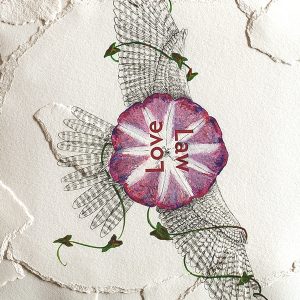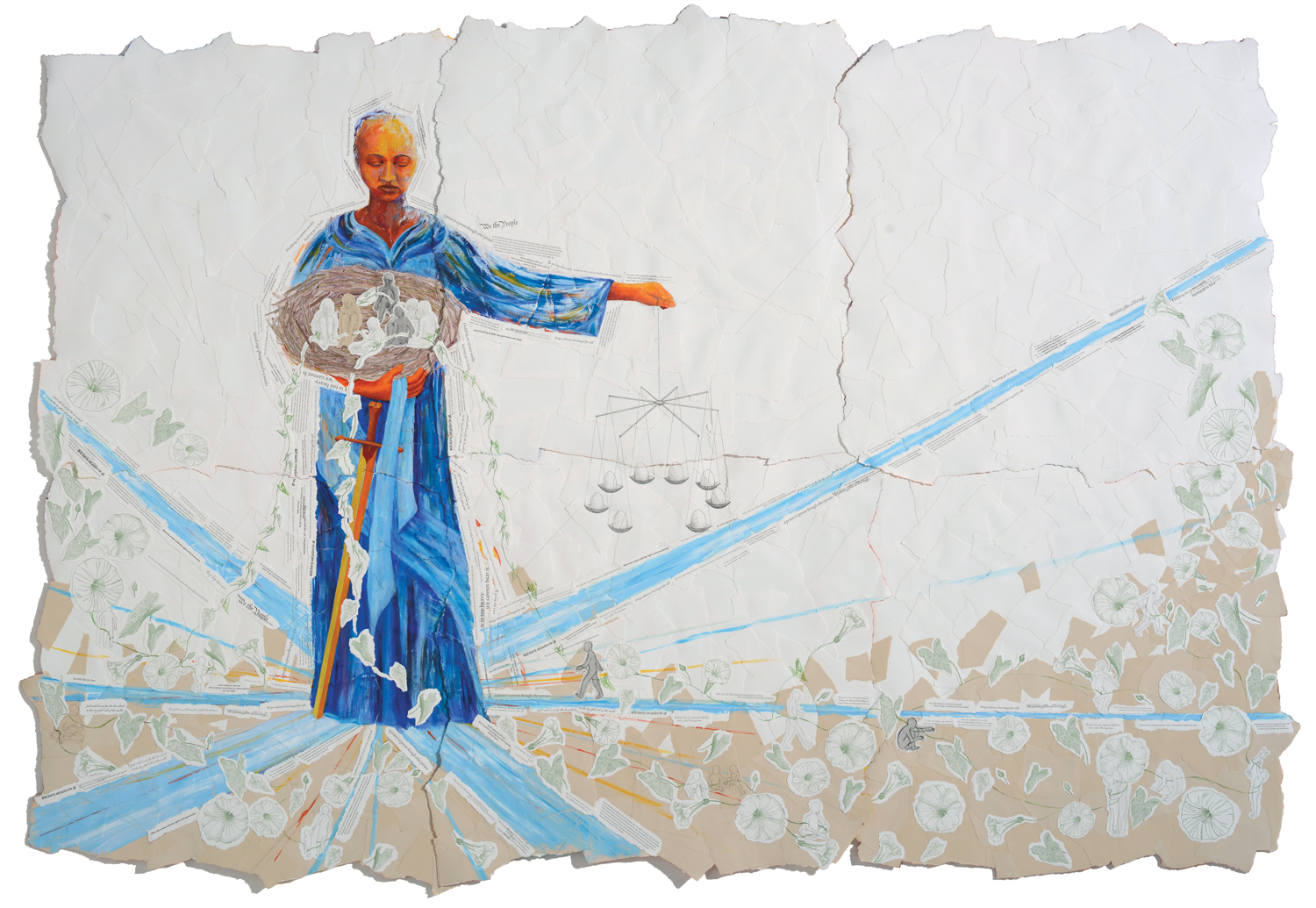
OUR PURPOSE
The purpose of the Justice Conversation is to witness and take part in the developing awareness of justice as a concept rooted in love, rooted in relationship and healing. We do this by:
- Engaging through a spectrum of cultures and faiths.
- Listening to concerns and experiences
- Inviting people to consider restoration and relationship as factors to achieving meaningful justice
- Disrupting thinking that equates justice with punishment
HOW THIS SITE WAS STARTED
Justice Conversation grew out of an art exhibition, Working from the Torn Things, at the Eddie Rhodes Gallery at Contra Costa College in 2016, when artist Kim Vanderheiden placed a torn paper ballot box in the center of the gallery and solicited comments and stories relating to justice from visitors. The comments were then used to create a torn paper compilation piece for the exhibit, and were also posted online. A salon-style conversation was also held where attendees shared their own experiences and reflections. This was not the first exhibition Vanderheiden’s work that revolved around the premise “Law is Love,” but it was the early beginning of Justice Conversation.
Signage in the initial exhibition at the Alameda County Law Library coinciding with the 800th anniversary of the Magna Carta, noted the long evolution of how the principles of the charter were reinterpreted throughout its history to reach our present understanding of the US Constitution. Vanderheiden began to explore through the work, how could this evolve next? Could we move from the present system, heavy in retribution, condemnation, and punishment, to one rooted in love? What could that look like?
Through legal scholar Peter Gabel’s writing, and research on restorative and collaborative justice practices, and observation of the activities of non-profits, Vanderheiden found a great breadth and depth of work underway that she’d been unaware of as a citizen. Many have invested their lives and careers in teaching, representing, and fostering a justice based on human needs, personal and community accountability, and restoring connection and relationship. In short, justice based on love.
Yet “we the people” haven’t yet reached the collective understanding that justice is about love, and that it is truly possible to live that. At least not enough of us. When we do, we will expect differently of our politicians, teach our children different behaviors, and shift the way we ourselves treat one another. The behavior of our institutions will change because they are, after all, just made up of us.

QUESTIONS WE’RE EXPLORING HERE
- If our practice of justice is in continual development, can we use our conversation to consciously direct the nature of that development across our society?
- How closely does our present justice system reflect the composite of the population’s understanding of what “justice” means?
- If we can observe, record, or quantify what the composite of the broad population’s understanding is, can we watch for shifts in understanding and determine what changes we’re ready to make in our institutions?
- Is the general population aware of the love-based justice work being done in fields such as law, education, and rehabilitation?
- How can we share with the general population how love-based justice works in a practical, functional way that can be relied upon for the health, safety, and well-being of our communities?
- Justice is a spiritual concept with deep roots in all religions. But within them, the question of love or punishment is interpreted in opposite ways by different followers. Are we progressing on a collective shift in consciousness towards love? What guidance has already been shared? What spiritual practices help us to make that shift?
- What is the role of personal transformation in practicing justice?
- How can we support each other through transformations within ourselves and our culture which may occur as we open ourselves to the experience of living a life based on justice in relationship to love?
